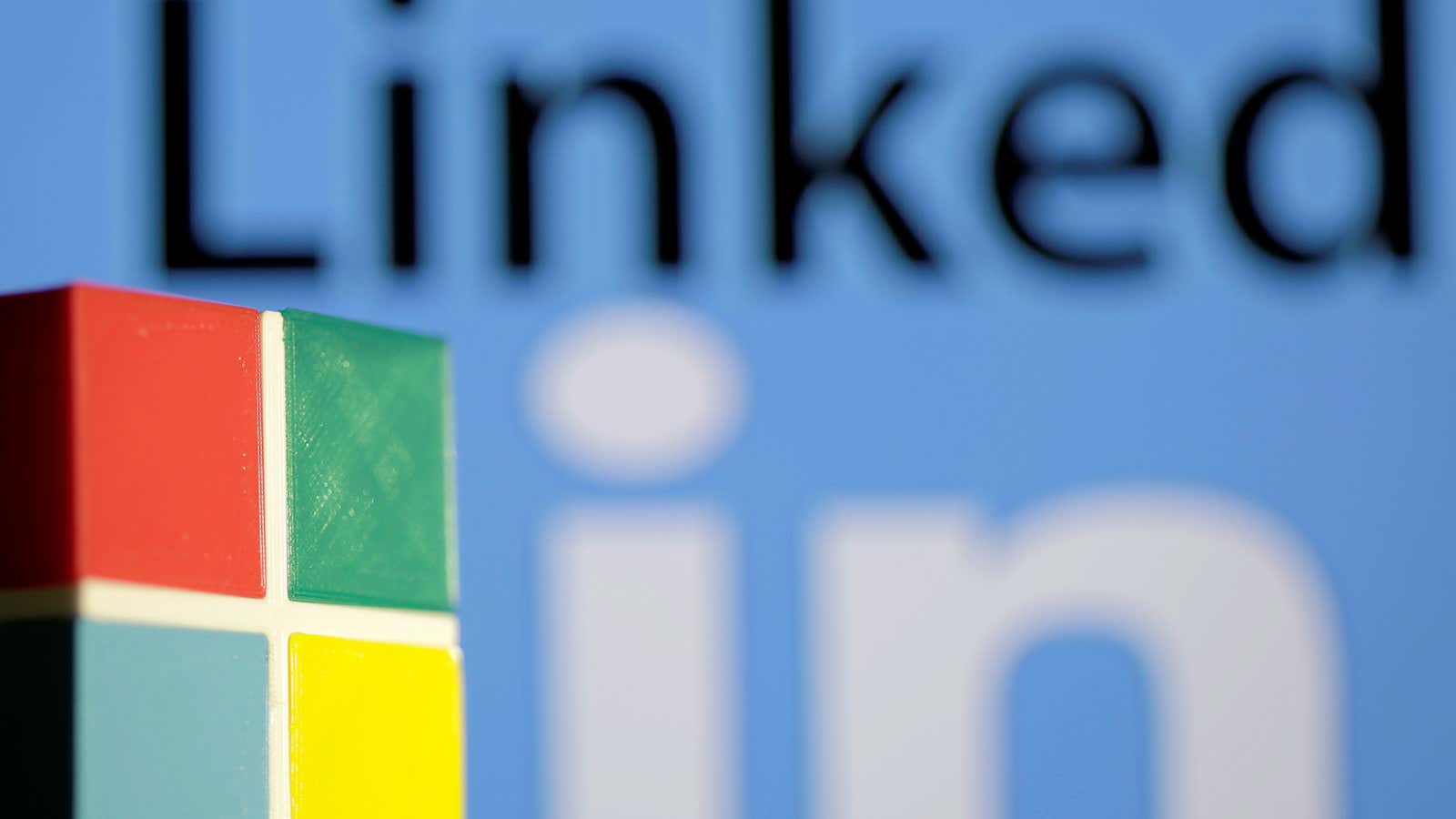In its $26 billion bid for LinkedIn this week, Microsoft made a bold move, paying almost 50% more per share than the price at which the social network last traded. So… why?
Some say it’s a sales-software play, while others are speculating that Microsoft is interested in LinkedIn’s role as a content publisher; others yet wonder if the tech giant is just going after LinkedIn’s treasure trove of user data. But those theories focus on what LinkedIn currently does and pay short shrift to its immense potential—specifically, the potential to make Microsoft a professional necessity.
With its Office suite—Word, Excel, PowerPoint, etc.—Microsoft already dominates the market for productivity tools. Given LinkedIn’s complementary focus on employment skills and career advancement, Microsoft is now in a great position to take over the hiring and education sides of work as well.
“Microsoft can drive the evolution of the competency marketplace in ways LinkedIn as a standalone company couldn’t,” says Ryan Craig, managing director of private equity fund University Ventures, which focuses on the higher education sector. “They can offer a complete HR solution.”
Consider that two-thirds of LinkedIn’s revenue already comes from the “talent solutions” it provides to businesses’ human resources departments, and that it’s a popular tool for salespeople looking for clients (paywall). Add in LinkedIn’s purchase of online education company Lynda last year, and it’s not hard to see how the platform—with integration into a larger business-catering company, like, say, Microsoft—could become an essential part of the way employers pick and train their employees. A LinkedIn-Microsoft product would not only help workers work, but also teach them the skills to get hired in the first place.
“LinkedIn has a unique advantage in the education space, in that they are the only place where hundreds of millions of people are voluntarily giving their longitudinal job and education history—which allows potentially for some unique analysis of what programs and courses or certifications actually lead to improved career paths,” says education consultant Michael Feldstein. Microsoft could examine that data and then offer those programs itself.
While Feldstein says Microsoft likely has “too much to lose by competing against traditional universities,” with whom it has close partnerships, it could easily dominate the corporate training market—currently a fragmented space with plenty of room for new players.
On a conference call following the acquisition announcement yesterday (June 13), a LinkedIn executive made the following vague, but telling, comments:
Through our acquisition of Lynda, we picked up a world-class entity in the creation of coursework that we believe could transform learning development. Now, imagine that coursework deeply integrated throughout Microsoft’s ecosystem, and one example specifically we’re excited about is integrating learning alongside some of the most popular productivity apps anywhere in the world—Excel, PowerPoint and Word.
Now, visualize a new tab added to Office called Learning, and you’ll start to get a sense of the power of this […] When you are in these Microsoft products, you’re going to be able to see who you can tap within your network, within the entire broader ecosystem, freelancers and the actual coursework itself.
Powerful, indeed.
